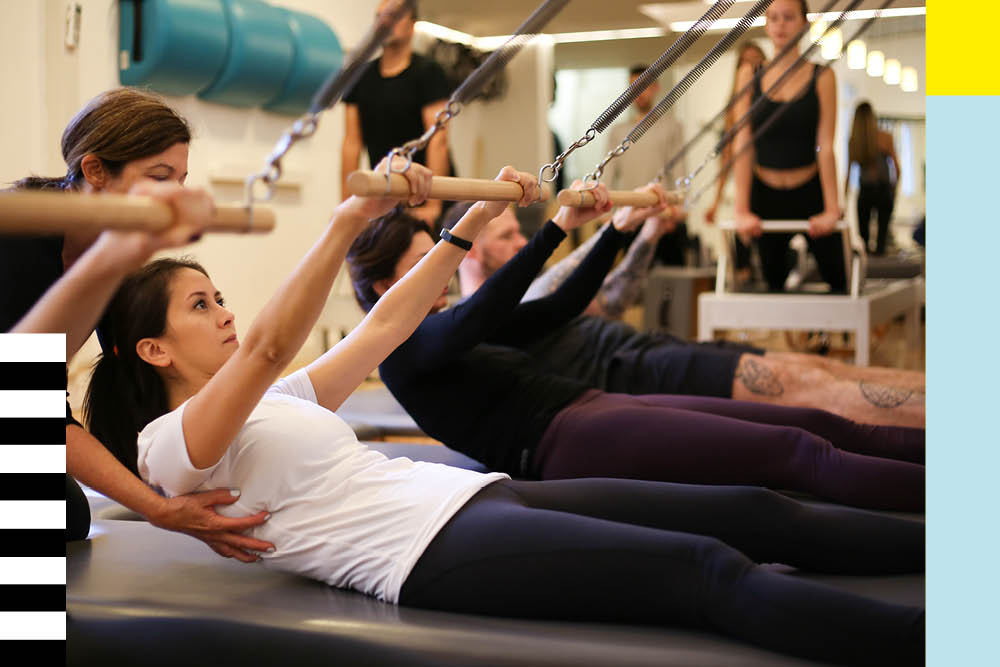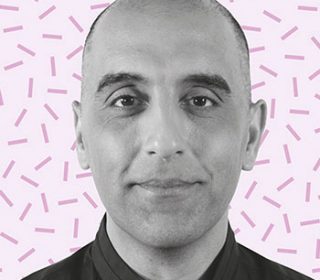6 Pilates exercises to help you sleep better

Regular exercise is widely recommended by experts as a natural way of overcoming sleep problems. In particular, Mr Joseph Pilates always advised to get up and exercise if you’re having troubles sending yourself off to dreamland!
Joseph said, ‘It is far better to be tired from physical exertion than to be fatigued by the ‘poisons’ generated by nervousness whilst lying awake.’
In other words, by adding exercise into your daily routine you can help boost your sleep duration, and in addition to this the quality of your sleep – particularly if done regularly.
It does, however, depend on the exercise you do, especially in the evenings as increasing your heart rate to a point where you get a spike in adrenalin can make it harder for you to fall asleep, as you are still ‘buzzed’ (similar to the effects you can get off coffee). This, however, is very dependent on the individual, as not everyone is affected in the same way. So, remember to listen to your body and mind!
Pilates is a great option to tackle these issues, as firstly it is low impact and can be done according to whichever level you wish to move at. Joseph Pilates also created a lot of his exercises from hospital beds (in fact, this is how the reformer was created) so are great to do when awake or releasing tensions from the day when going to bed.
Pilates also helps reduce psychological tension, anxiety, depression, muscle spasm, neck and back pain and high blood pressure which can all contribute to bad sleep.
Not to mention, Pilates movement – also called an ‘internal shower’ – will warm the body from the inside out which can be very beneficial before bed as it will trigger an increase in body temperature, enough to get that post-exercise drop in temperature that helps promote falling asleep easier.
Spinal rolling exercises will also massage the spine, relaxing the nervous system helping you to cleanse the body, removing the stresses and toxins of the day. This will also prepare your mind to switch off from the day making it easier to drift off and sleep easier.
In Joseph Pilates book ‘Return to lift through Contrology’ he wrote tips to get a better sleep beyond his exercises.
He said, ‘set your sleep environment’. How do we do this?
1. The room should be bool, quiet, well ventilated and dark
2. The mattress should be firm
3. Avoid bulky pillows
4. Use the lightest covering to be warm
But beyond those tips for physical sleep environment, Joseph Pilates says the most important element of better and deeper sleep is mental calm.
The hour before bed should be the most restful time of the day. Create a habit where you wind down, switch off and have some “you time”, including these suggested Pilates moves. With these moves you will also be able to focus on breathing, which will calm the nervous system down, encouraging a more restful night’s sleep and a more relaxed body to curl into bed.
Exercises adapted for bed
1. Breathing
Start with consciously breathing, and then follow these steps:
- On your back, lengthen your arms and legs, your back and neck, and take control of your breathing.
- Consciously scan your body to feel its condition. Feel the ribs expand sideways as you inhale, counting slowly for five seconds until your lungs are full.
- Exhale evenly, closing the ribs and pulling the abdomen in, squeezing out all the air.
- Repeat this nine more times.
2. Tendon Stretch
The tendon stretch is often done on the Pilates reformer. This is a really useful adaptation to do in bed:
- Bring your heels together and push your heels away as you stretch your toes toward your head for three seconds.
- Then point the toes away from you.
- Repeat nine more times.
3. Double Leg Stretch
Double leg stretch is an intermediate exercise that works the abdominals, radiating from the core powerhouse:
- Bring both knees to your chest and hold onto your ankles, stretching your lower back.
- Hold the position for 10 long deep breaths, pulling in the abdomen on the exhale to massage the inner digestive organs and to release the gas from the intestines.
4. Single-Leg Circle
The single-leg circle challenges your core strength and pelvic stability. It also strengthens the quads and hamstrings and promotes a healthy hip joint:
- Raise your right leg straight up – if you can, hold the toes with both hands, then try this too. If you cannot hold your toes, hold onto your calf or thigh and reach your heel to the ceiling.
- Lengthen the left leg away from you.
- Hold this position for the 10 count breath.
- Release your hands, and place your arms and hands long by your sides.
- Make 5 small circles in each direction with your extended leg to lubricate the hip joint.
- Repeat on the other side.
5. Pelvic Lift Exercise
The pelvic lift is another exercise usually done on the reformer:
- Bend your knees and have your feet on the bed hip-distance apart.
- Curl your pelvis towards your ribs, squeeze your buttocks, and lift your lower body for a count of five seconds.
- Slowly lower your back down to a count of five seconds, imprinting the spine into the mattress.
- Repeat nine times.
6. Hip Opener
- Bring the soles of your feet together as close to your torso as you can, and let your knees open up.
- Rest there a breathe deeply.
- Sweet dreams…
Gaby Noble is a leading pilates expert and owner of award-winning Classical Pilates studio, Exhale Pilates London. Find out more at exhalepilateslondon.com








